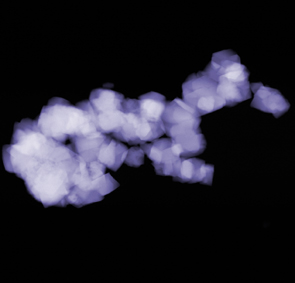New Reference Materials Support Industrial ZeolitesFor Immediate Release: September 14, 2006
Contact: Michael Baum 301-975-2763 The National Institute of Standards and Technology (NIST) has issued three new reference materials to support researchers studying the properties of commercially important zeolites.
First described in the 18th century, zeolites have seen increasing use in industry and commerce from cat litter to industrial catalysts and "molecular sieves." Zeolites belong to class of materials called alumino-silicates whose crystal structures form highly porous, nanoscale "cages" that can filter and trap small molecules. Naturally occurring zeolites are mined and widely used as absorbents in products such as cat litter. Tailored synthetic zeolites have a wide variety of more specialized applications, such as in laundry detergents (where they replace pollution-causing phosphates), and as catalysts in oil refineries. Because they can be designed with pores that pass only molecules of a certain size and shape, zeolites have excited considerable interest as molecular sieves for chemical separations—they are used in oxygen generation systems for medical oxygen, for example. It is often extremely difficult to make precision measurements of key chemical characteristics for zeolites because they are ferociously hygroscopic. Humidity must be precisely controlled—and specified—to make meaningful measurements of the elemental content, for example. This has made it difficult to compare experimental results between different labs. To provide a common basis for research on three widely used industrial zeolites, NIST has issued reference materials for Zeolite Y (RM 8850), Zeolite A (RM 8851) and Ammonium ZSM-5 Zeolite (RM 8852). While these materials do not come with the certified property values and uncertainty estimates furnished with NIST Standard Reference Materials (SRMs), these RMs do provide a common source of zeolite materials for measurement comparisons. Reference and information values are provided for major and trace element content, key atomic ratios, enthalpy of formation, unit cell parameters and particle size distributions. For technical details, see https://srmors.nist.gov/tables/view_table.cfm?table=106-7.htm. |

